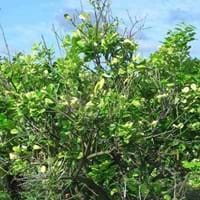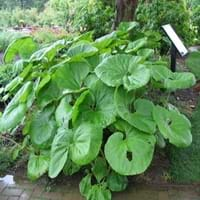Life Span
Perennial
Perennial
Type
Fruit
Herbaceous Perennial
Origin
Southeastern Asia
China, Japan, Korea
Types
Not Available
Not Available
Habitat
Deep, gardens, old gardens, Well Drained
Dappled Shade, meadows, Shady Edge, Sunny Edge, Woodland Garden
USDA Hardiness Zone
9-11
5-9
Sunset Zone
H1, H2, 8, 9, 12, 13, 14, 15, 16, 17, 18, 19, 20, 21, 22, 23, 24
2a, 2b, 3a, 3b, 4, 5, 6, 7, 8, 9, 10, 14, 15, 16, 17, 18, 19, 20, 21, 22, 23, 24
Habit
Oval or Rounded
Clump-Forming
Flower Color
White
Light Yellow, Ivory
Flower Color Modifier
Bicolor
Bicolor
Fruit Color
Yellow, Green, Yellow green
Not Available
Leaf Color in Spring
Green
Green
Leaf Color in Summer
Green
Green
Leaf Color in Fall
Green
Green
Leaf Color in Winter
Light Green
Not Available
Plant Season
Spring, Summer, Fall
Spring, Summer, Fall
Sunlight
Full Sun, Partial Sun
Partial shade, Full Shade
Type of Soil
Loam, Sand
Clay, Loam, Sand
The pH of Soil
Acidic, Neutral
Acidic, Neutral, Alkaline
Soil Drainage
Well drained
Poorly Drained
Bloom Time
Spring, Late Spring, Early Summer, Summer, Late Summer, Early Fall
Early Spring, Late Winter
Tolerances
Drought
Wet Site
Where to Plant?
Ground
Container, Ground, Pot
How to Plant?
Seedlings
Divison, Seedlings
Plant Maintenance
Medium
Medium
Watering Requirements
Average Water Needs, Water Deeply
Water once every two or three weeks
In Summer
Lots of watering
Lots of watering
In Spring
Moderate
Moderate
In Winter
Average Water
Average Water
Soil pH
Acidic, Neutral
Acidic, Neutral, Alkaline
Soil Type
Loam, Sand
Clay, Loam, Sand
Soil Drainage Capacity
Well drained
Poorly Drained
Sun Exposure
Full Sun, Partial Sun
Partial shade, Full Shade
Pruning
Prune for shortening long shoots, Remove damaged leaves, Remove dead branches, Remove dead leaves, Thinning
Remove the old foliage
Fertilizers
Apply N-P-K, can go long without fertilizers
Use a fertilizer ratio of 16-4-8
Pests and Diseases
Armored scales, Fomes root rot, Mites, Red blotch
No serious insect or disease problems
Plant Tolerance
Cold climate, Drought, Heat And Humidity
Drought
Flowers
Insignificant
Showy
Flower Petal Number
Single
Not Available
Fragrant Bark/Stem
Yes
No
Foliage Texture
Medium
Bold
Foliage Sheen
Glossy
Glossy
Attracts
Birds, Butterflies
Not Available
Allergy
Not Available
no allergic reactions
Aesthetic Uses
Bonsai
Bog Garden, Showy Purposes
Beauty Benefits
Not Available
Not Available
Environmental Uses
Air purification
Air purification
Medicinal Uses
Blood purifier, Digestion problems, Digestive disorders
Antiasthamatic, Antispasmodic, Expectorant, Poultice
Part of Plant Used
Fruits, Leaves
Flowers, Stem
Other Uses
Making Shampoo, Used as insect repellent
Can be boiled and seasoned, pickled, Used as umbrellas by Japanese children, Used as walking sticks, Used like rhubarb
Used As Indoor Plant
No
No
Used As Outdoor Plant
Yes
Yes
Garden Design
Container, Edible, Fruit / Fruit Tree, Hedges, Mixed Border
Bog Garden, Container, Feature Plant, Water Gardens
Botanical Name
CITRUS hystrix
PETASITES japonicus
Common Name
Kaffir Lime, Makrut
Giant Butterbur, Japanese Butterbur
In Hindi
काफ़िर लाइम
Giant Butterbur
In German
Kaffernlimette
Riesen Pestwurz
In French
combava
géant Butterbur
In Spanish
cafre
gigante petasita
In Greek
Καφρός Lime
Giant Butterbur
In Portuguese
Kaffir Lime
Carrapicho gigante
In Polish
kaffir wapno
Giant Lepiężnik
In Latin
Cafres Lime
Giant Butterbur
Phylum
Tracheophyta
Magnoliophyta
Class
Magnoliopsida
Magnoliopsida
Order
Sapindales
Asterales
Family
Rutaceae
Asteraceae
Clade
Angiosperms, Eudicots, Rosids
Angiosperms, Asterids, Eudicots
Tribe
Not Available
Senecioneae
Subfamily
Not Available
Asteroideae
Number of Species
Not Available
Not Available
Importance of Kaffir Lime and Giant Butterbur
Want to have the most appropriate plant for your garden? You might want to know the importance of Kaffir Lime and Giant Butterbur. Basically, these two plants vary in many aspects. Compare Kaffir Lime and Giant Butterbur as they differ in many characteristics such as their life, care, benefits, facts, etc. Every gardener must at least have the slightest clue about the plants he wants to plant in his garden. Compare their benefits, which differ in many ways like facts and uses. The medicinal use of Kaffir Lime is Blood purifier, Digestion problems and Digestive disorders whereas of Giant Butterbur is Antiasthamatic, Antispasmodic, Expectorant and Poultice. Kaffir Lime has beauty benefits as follows: Not Available while Giant Butterbur has beauty benefits as follows: Not Available.
Compare Facts of Kaffir Lime vs Giant Butterbur
How to choose the best garden plant for your garden depending upon its facts? Here garden plant comparison will help you to solve this query. Compare the facts of Kaffir Lime vs Giant Butterbur and know which one to choose. As garden plants have benefits and other uses, allergy is also a major drawback of plants for some people. Allergic reactions of Kaffir Lime are Not Available whereas of Giant Butterbur have no allergic reactions respectively. Having a fruit bearing plant in your garden can be a plus point of your garden. Kaffir Lime has showy fruits and Giant Butterbur has no showy fruits. Also Kaffir Lime is not flowering and Giant Butterbur is not flowering . You can compare Kaffir Lime and Giant Butterbur facts and facts of other plants too.





